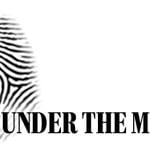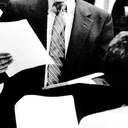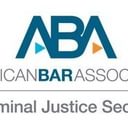
A CHICAGO TRIBUNE INVESTIGATIVE SERIES
Chicago Tribune veteran project reporters Flynn McRoberts, Steve Mills and Maurice Possley, together with researcher Judith Marriott, scrutinized criminal cases including “scientific” or forensic evidence, conducting hundreds of interviews across the country and examining thousands of court documents. From October 17, 2004 to October 21, 2004 the Tribune published a five-part investigative series which details the use of forensic evidence in criminal trials and concludes that forensic science’s false aura of infallibility distorts the adversarial system of American justice.
Part I: Forensics Under the Microscope: Unproven techniques sway courts, erode justice
The Tribune’s investigation of forensics in the courtroom describes flawed testing analysis, questionable science once considered reliable, and shoddy crime lab practices leading to wrongful convictions. Developments in DNA technology shed new light on these problems by revealing the shaky scientific foundations of techniques like fingerprinting, firearm identification, arson investigation, and bite-mark comparison.
The Tribune’s review of 200 DNA and death row exonerations nationwide in the last 20 years found that more than a quarter (55 cases with 66 defendants) involved original forensic testing or testimony that was flawed. Through hundreds of interviews, an examination of thousands of court documents and an analysis of criminal cases that turned on forensic evidence, the Chicago Tribune reporters discovered the following:
- Fingerprinting is so subjective that the most experienced examiners can make egregious mistakes.
- Prosecutors continue to rely on experts who embrace debunked theories about arson.
- Forensic dentists, who link suspects to bite marks left on crime victims, continue to testify despite having no accepted way to measure their rate of error or the benefit of peer review. DNA has shown that even the field’s leading practitioners have made false bite-mark matches.
- Scandals at labs across the country — including facilities in Maryland, Texas and Washington state — have spotlighted analysts who have incorrectly assessed evidence, hidden test results helpful to defendants and testified falsely in court. These scandals underscore the often-ineffective standards governing crime labs. Analysts involved in faulty forensic work often testify in hundreds of trials, an indication of how widespread this problem can be.
Part II: Arson Myths Fuel Errors: Debunked theories plague fire probes, lead to wrongful arrests, prosecutions
The Tribune’s investigation found that scientific developments in fire investigations have called into question crucial expert testimony in many cases, including some death penalty prosecutions. As a result of untested theories, shoddy analysis and a resistance to rigorous review, long-time arson investigators are now seeing their conclusions contradicted by colleagues who question the reliability of the folk wisdom that has dictated this profession for decades. What was once accepted as truth is now being exposed as inaccurate findings through research and laboratory tests, and some experts believe that thousands of fires may have been misinterpreted as arson over the last 50 years because of reliance on myths.
Ernest Willis was freed on October 6, 2004 after spending nearly two decades on death row in Texas for allegedly setting a 1986 fire that experts now say could not have been an arson. “God knows how many innocent people have been convicted. You’ve got tons of holdouts — good old boys who’ve investigated 5,000 fires and they are doing it the same way they’ve always done it,” said Gerald Hurst, a fire investigator whose expert testimony helped to exonerate Willis and several other wrongly convicted persons. Long-time fire investigator John DeHaan, who has been a fire and explosives consultant in California for more than 30 years, echoed Hurst’s observation and noted, “Most of the fire investigation in the mid-1980’s was taught by word of mouth by people who had been doing if for 20 years. There wasn’t a lot of science in fire investigation. It was oral tradition.” DeHaan also stated that among arson investigators there is a negative reaction to incorporating science into their methodology, and that many of these professionals still provide expert testimony based on outdated methodology.
Part III: From the Start, a Faulty Science: Testimony on bite marks prone to error
A decidedly novel application of dentistry called “forensic odontology” attempts to identify criminals based on the bite marks they leave on the bodies of their victims. The Tribune examined 154 cases in which bite marks played a key role, mostly murders and rapes, finding a disturbing pattern: in more that a quarter of those cases, the prosecution and defense offered forensic dentists who gave diametrically opposed opinions. In some instances, odontologists can’t even agree on the most basic issue — whether a wound is a bite mark at all.
The Tribune’s series concluded that there is no accurate way to measure the reliability of bite-mark comparisons, and bite-mark comparisons have gained acceptance without the benefit of broadly reviewed research and scientific validation. “I think bite marks probably ought to be the poster child for bad forensic science,” said David Faigman, a professor at the University of California Hastings College of the Law and co-editor of “Modern Scientific Evidence.”
In one notorious case, bite-mark evidence helped send Ray Krone to death row. Krone spent more than three years on death row and seven years under a life sentence before DNA testing connected another man to the crime and exonerated Krone.
Part IV: When Labs Falter, Defendants Pay: Bias toward prosecution cited in Illinois cases
The Tribune reports that in Illinois, the paychecks of crime analysts come from a police agency, and state law mandates they serve the prosecution, calling on the lab system to provide forensic science to “local law enforcement agencies and local state’s attorneys.” The perception of crime-lab bias is further reinforced by the fact that of the roughly 260 accredited U.S. forensic labs, 90 percent are affiliated with law-enforcement agencies, according to the American Society of the Crime Laboratory Directors’ Laboratory Accreditation Board.
Cook County Illinois Circuit Judge Daniel Locallo cautioned that “people who are working at the state crime lab should not take the position that ‘we are an arm of the prosecution.’ ” Judge Locallo said, “They’re scientists. They should be an arm of the truth.” However, Don Plautz, who spent 24 years in the Illinois crime lab system as a supervisor and director said that many forensic scientists at the state police labs saw their role as members of the state’s attorney’s team. “They thought they were prosecution witnesses,” he said. “They didn’t understand they were just scientists.”
Additionally, The Tribune’s investigation revealed that in crime labs across the country, DNA testing has unraveled convictions built on faulty lab work, and crime analysts have been accused of slanting their test results to help prosecutors win convictions.
Part V: Scandal Touches Even Elite Labs: Flawed work, resistance to scrutiny seen across U.S.
Lab scandals have exposed the lack of independent oversight and the often-ineffective standards governing the labs that analyze forensic evidence. Revelations of shoddy work and poorly run facilities have shaken the criminal justice system, raising doubts about the reputation of labs as unbiased advocates for scientific truth. In recent years, evidence of problems ranging form negligence to outright deception has been uncovered at crime labs in at least 17 states. Among the failures were faulty blood analysis, fingerprinting errors, flawed hair comparisons and the contamination of evidence used in DNA testing.
Two of the nation’s highest profile crime-lab scandals resulted in the exonerations of at least 10 defendants, millions of dollars in settlements and broad reviews of hundreds of their cases. Scandal also has hit the FBI crime lab, long considered the nation’s top forensic facility.
In Harris county Texas, a jurisdiction that has sent 75 people to the death chamber — more than most states — revelations of incompetent analysts in the lab forced Houston authorities to close it. Police Chief Harold Hurtt later announced the discovery of 280 boxes of evidence from at least 8000 Houston cases spanning 25 years. However, Texas Governor Rick Perry rejected the chief’s plea to halt executions of inmates convicted in Harris County until the scope of problems at the police crime lab can be determined.
After Earl Washington challenged the test results from the Virginia state crime lab that had helped secure his conviction and death sentence, Governor Douglas Wilder commuted his sentence to life in prison, nine days before his scheduled execution, finding that the new test results raised a “substantial question” about Washington’s guilt. Six years later, then-Governor James Gilmore ordered another series of tests, and Washington was excluded as a suspect and pardoned.
The Tribune series concludes that labs are too often a place where mistakes, omissions and a lack of rigor lead investigators down false trails that end in wrongful convictions. Judges and juries sift through often-contradictory evidence, in an effort to determine the truth. Across the country, forensic science is being undermined by unproven theories and experts who testify in a misleading fashion. When experts are allowed to overstate their findings and unvalidated techniques are equated with science, judges and juries can be misled, the justice system fails and innocent people are convicted.
Click HERE to read the Chicago Tribune Series “Forensics Under the Microscope” in its entirety.



